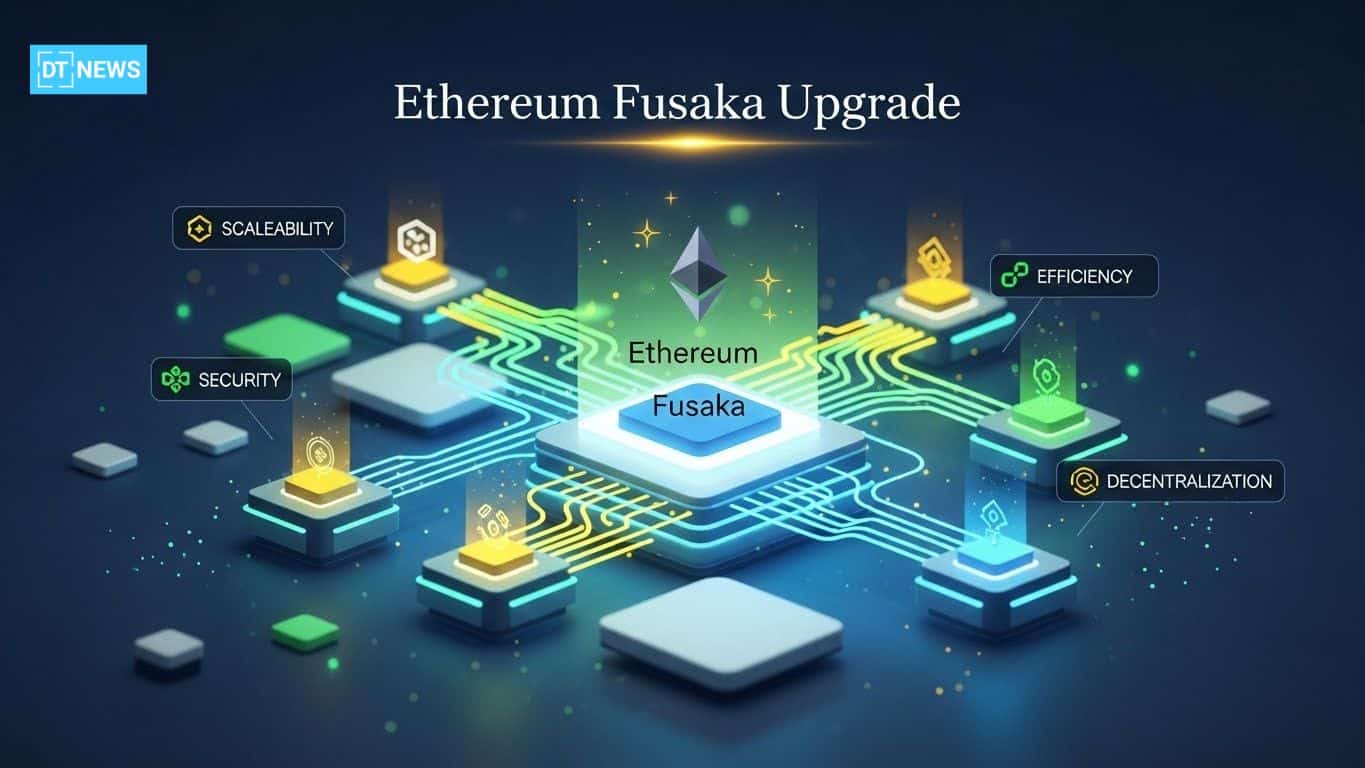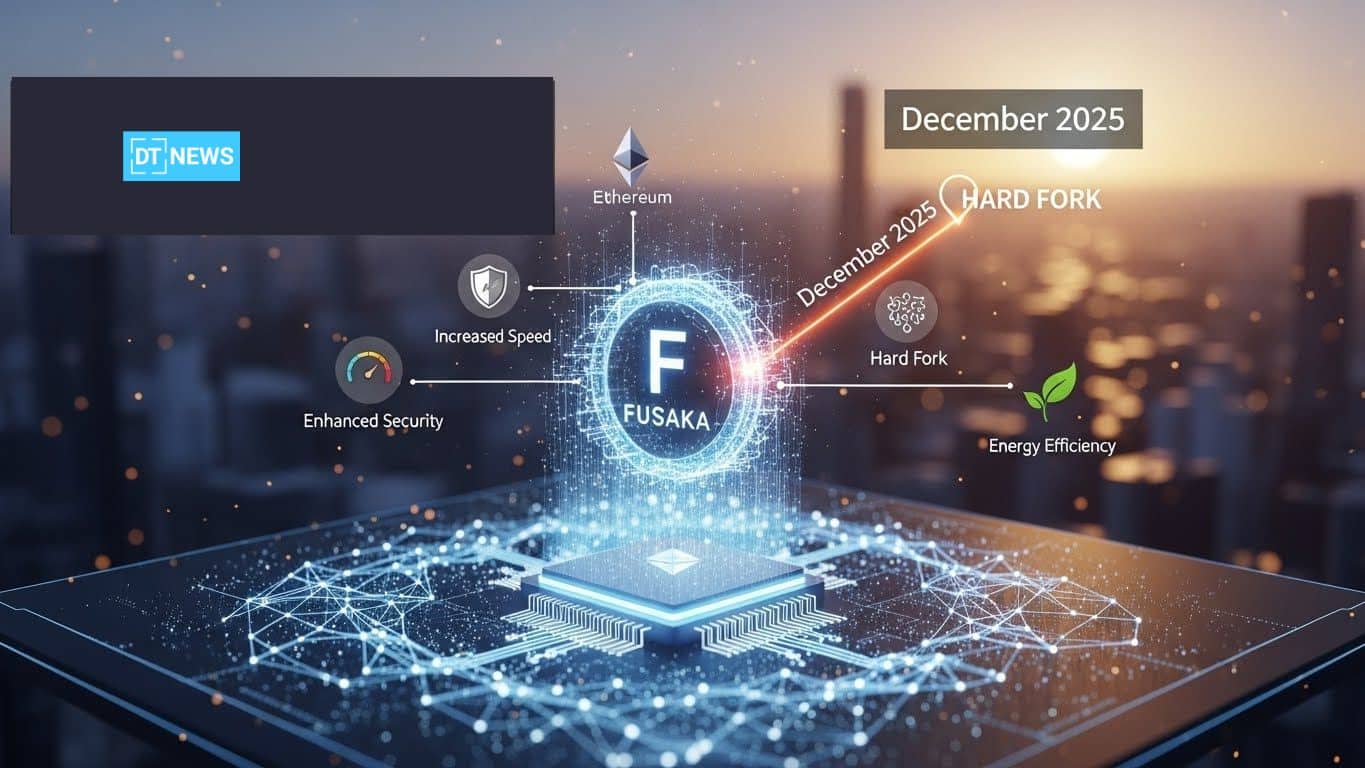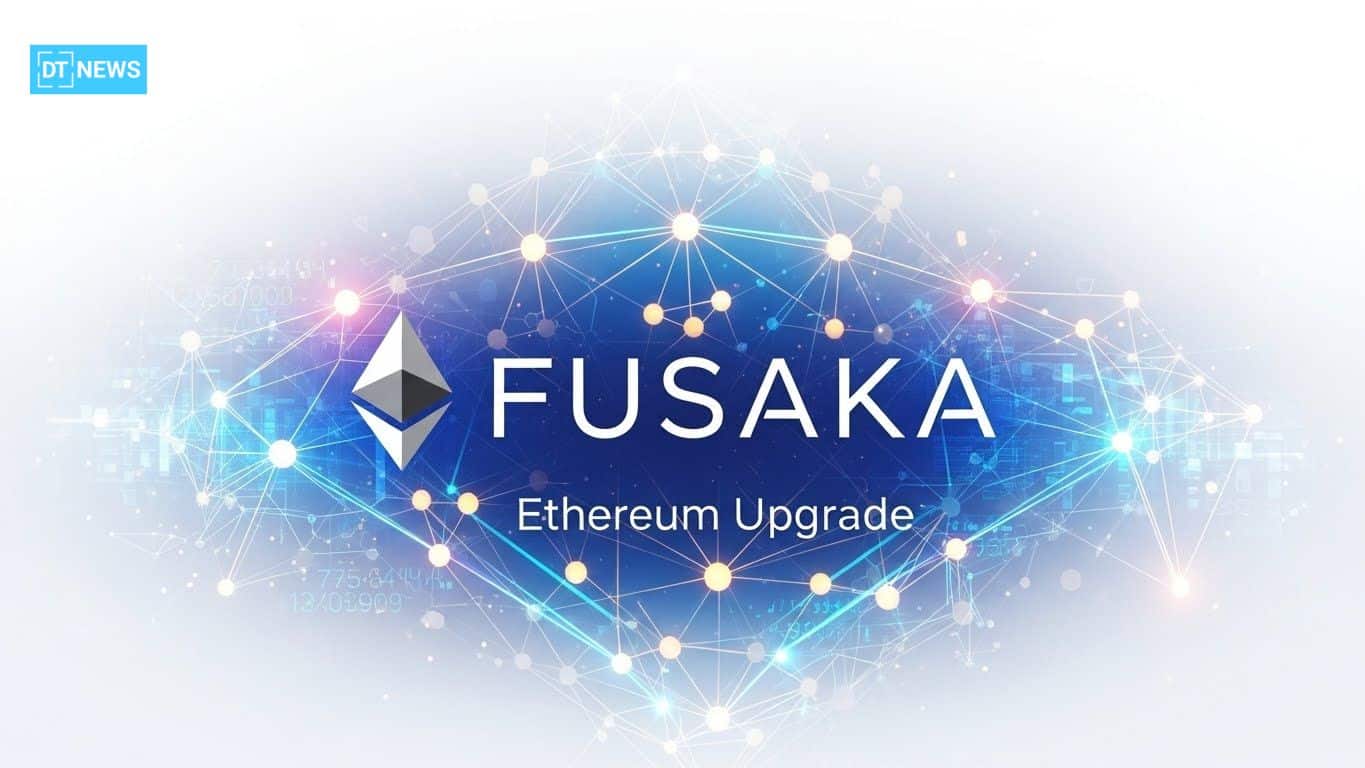This article was first published on Deythere.
- Understanding Fusaka: What’s Changing
- The Significance of Fusaka on Scale and Capacity
- Whom Does It Favor: L2s, Validators, and Users
- Where Fusaka Fits Into Ethereum’s Long-Term Roadmap
- Conclusion
- Glossary
- Frequently Asked Questions About Ethereum Fusaka Upgrade
- When will Fusaka activate on Ethereum mainnet?
- What’s so special about Fusaka?
- Will Fusaka Make Ethereum Faster and Cheaper for Rollups, Users?
- Does Fusaka change the way full nodes work?
- Is Fusaka is the final upgrade required for Ethereum?
- References
The Ethereum network is getting a major hard fork called Fusaka (its second so far this year after May’s spectacular Pectra).
Fusaka brings with it numerous modifications to enhance data availability, scaling rollups, block capacity, and node efficiency. With demand from layer-2 rollups on the rise, Fusaka could signal a turning of the tide as Ethereum begins to scale not just by raw power but by smarter architecture.
This update is a fundamental step along Ethereum’s “Surge – Verge – Purge” roadmap that Ethereum has been following to develop further scalability, privacy and decentralization into the platform.
Understanding Fusaka: What’s Changing
Fusaka is a bundle of two internal code-names (Osaka – execution-layer and Fulu – consensus-layer) that come together as one package upgrade.
The biggest feature announced by the Ethereum Foundation is EIP-7594 (PeerDAS, Peer Data Availability Sampling), which allows validators to validate data from rollup “blobs” by only downloading a proof for small chunks of data from each one instead of full-bore everything.
Once activated at block 13,164,544, expected 21:49:11 UTC on December 3, Fusaka enables not only PeerDAS but also it lays the groundwork for incremental throughput scaling through Blob-Parameter-Only (BPO) forks.
Aside from making data available, Fusaka includes a basket of other protocol improvements: gas changes and how blocks are sized, security hardening, but also things to improve the experience for developers and wallet providers.
So Fusaka is more than a tweak, it’s a complete infrastructure upgrade.

The Significance of Fusaka on Scale and Capacity
The stakes here are high in more ways than one:
PeerDAS, first and foremost, significantly alters the way layer-2 rollup data is processed. Instead of every full node having to keep a record of everyone else’s blobs, validators can sample some, thereby slashing bandwidth and storage requirements while maintaining data availability guarantees.
This allows the network to support far more blobs per block without causing undue stress on individual node operators.
Blob capacity is made flexible and scalable. By way of planned BPO forks following Fusaka, Ethereum can scale per-block blob limits, from existing values to desired targets, as dictated by rollup demand.
This eliminates disruptive, cross-site upgrades for each capacity increment.
On the execution layer and consensus layer, improvements will significantly boost overall transaction throughput and efficiency.
Fusaka adjusts the gas and block sizes, revalues cryptographic routines, upgrades to new opcodes and precompiles for new features like contemporary signature schemes.
Collectively, these changes make Ethereum more future-proof, capable of handling ever-increasing layers-2 demand, less resource-intensive full nodes and potentially able to pave the way for yet more complex and data-burdened applications within DeFi, gaming or on-chain social platforms.
Whom Does It Favor: L2s, Validators, and Users
For layer 2 networks that depend on Ethereum’s base layer for data and security, Fusaka is a big win.
By making things cheaper and increasing capacity, rollups and other L2 chains can run more transactions through without fearing data bottlenecks on L1. That could make L2 use cheaper, faster and more appealing, prompting wider adoption.
Node operators and validators are also potentially better off. PeerDAS reduces the amount of storage and bandwidth needed, further reducing the load for small operators or hobbyist nodes.
In the eyes of the Ethereum Foundation, this will make it easier for users to partake in network consensus and decrease centralization pressure.
For average Ethereum users, those who send and receive transactions, use DeFi applications or L2 services, the advantages could be lower fees, faster confirmation times and an improved experience.
Wallets, signing methods and layer-2 integrations could get slicker especially as Fusaka brings developer-focused updates beyond mere backend scaling.
In short, the work to be carried out by Fusaka serves to strengthen Ethereum’s status as a modular, high-capacity settlement layer not only for native ETH transactions but as the backbone data highway for an emerging web3 ecosystem.

Where Fusaka Fits Into Ethereum’s Long-Term Roadmap
To understand Fusaka’s significance, then, it helps to step back and chart the course of Ethereum.
Following the 2022 Upgrade that changed Ethereum from proof-of-work to a proof-of-stake consensus algorithm and significantly decreased energy requirements, the network prioritized scalability.
In 2023, Shapella upgrade enabled staked ETH withdrawals.
In March 2024, the Dencun upgrade saw “blobs,” a low-cost temporary data lane for rollups added.
The Pectra upgrade in May 2025 included account-abstraction enhancements and revised staking parameters.
Finally, with Fusaka, Ethereum moves beyond one-dimensional upgrades. The network is increasing numerous scaling dimensions at the same time, data availability, block capacity, client performance, and more.
Ethereum is building toward the long-term “Surge – Verge - Purge” vision, with a focus on modularity, high throughput and developer-friendly infrastructure.
In effect, Fusaka is a movement from incremental to systematic scaling, it paves the way for Ethereum’s readiness for mass traffic, large-scale rollups and future growth in the years to come.
Conclusion
The Fusaka upgrade is a welcome upgrade for Ethereum. With the introduction of PeerDAS, increased blob capacity, refined gas and block parameters as well as a more scalable architecture across infrastructure, Ethereum is poised to address the needs of an emerging web3 room.
For L2 rollups, it’s promise to validators, developers and users alike is for a faster, cheaper and more scalable environment.
Right now, on the 3rd of December 2025, Ethereum is not only upgrading, it is changing.
Glossary
PeerDAS (Peer Data Availability Sampling): A protocol (EIP-7594) which allows Ethereum validators to verify rollup data by sampling slices of it rather than downloading entire “blobs,” which will lower bandwidth and storage costs.
Blob: A scratchpad data structure that layer-2 solutions use to submit batches of transactions or state updates on Ethereum. Blobs cost less than ordinary call data, but need to stick around long enough for the verification.
BPO (Blob-Parameter-Only) Fork: Minor protocol changes to parameters related to blobs, and allows updating those sources of fee/reward/penalty factors safely with soft-forks while being able to prevent DoS-inducing bad parameter settings.
Surge / Verge / Purge roadmap: Ethereum’s long-term scaling plan. “Surge” is about rollups and data-availability, “Verge” has to do with lighter clients and efficiency, “Purge” is about history pruning and “Splurge” on other broader scaling needs. Fusaka spans multiple phases.
EIP (Ethereum Improvement Proposal): A design-level specification for proposed changes to the Ethereum protocol, such as the standard for a core-protocol upgrade like Fusaka.
Frequently Asked Questions About Ethereum Fusaka Upgrade
When will Fusaka activate on Ethereum mainnet?
Fusaka is set to go operational at index 13,164,544 (approximately 21:49:11 UTC on December 3, 2025).
What’s so special about Fusaka?
‘PeerDAS’ (EIP-7594) is the primary story. It allows to prove data availability efficiently by sampling instead of forcing every validator to download full data blobs, which makes scaling rollup data much more feasible.
Will Fusaka Make Ethereum Faster and Cheaper for Rollups, Users?
Yes. With similar improvements in data cost, reduced gas and block parameters while increasing blob capacity, Fusaka is built to reduce fees and increase throughput most notably for layer-2 rollups as well as bolster network overall efficiency.
Does Fusaka change the way full nodes work?
Fusaka lowers down node operators’ storage and bandwidth cost, courtesy to PeerDAS, as well as cleaner history pruning and lighter client sync paths, thus being friendly-enabling smaller validators/hobbyist nodes.
Is Fusaka is the final upgrade required for Ethereum?
Not at all. Fusaka is a big achievement but the story of Ethereum carries on. Further upgrades (e.g., including upcoming ‘Glamsterdam’ and more) beyond Fusaka will be layered on top of the current build with additional enhancements in execution, MEV protection, data querying and modular scaling.



















































































































